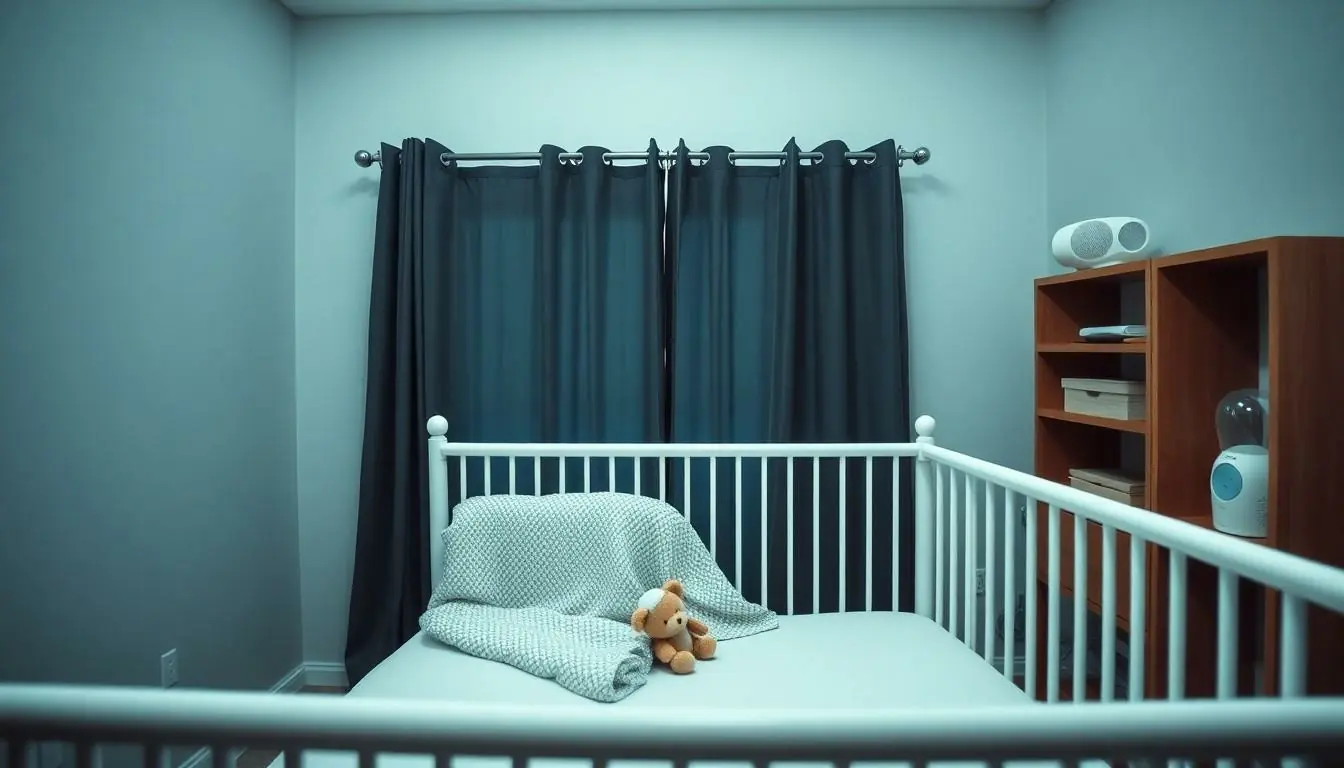At six months old, babies often decide sleep is overrated. Just when parents think they’ve cracked the code to peaceful nights, their little ones pull a fast one, entering the infamous sleep regression phase. It’s like a surprise party, but instead of cake and balloons, there’s crying and sleepless nights.
Table of Contents
ToggleUnderstanding 6 Month Sleep Regression
Babies often experience sleep regression around the six-month mark. This phase can disrupt previously established sleep routines and lead to unexpected nighttime awakenings.
What Is Sleep Regression?
Sleep regression refers to a period when a baby who previously slept well begins waking frequently or struggles to fall asleep. Factors contributing to this change include developmental milestones, growth spurts, and cognitive advancements. Typically, sleep regressions happen at various ages, but the six-month mark is significant due to changes in sleep cycles and newfound skills like rolling over or sitting up. These developments can increase excitement, leading to heightened emotional responses and disrupted sleep patterns.
Signs of 6 Month Sleep Regression
Recognizing signs of sleep regression can help parents adjust their approach. Common indicators include increased fussiness at bedtime, shorter nap durations, and frequent night awakenings. Babies may also display difficulty settling down during nighttime sleep. Additionally, changes in feeding patterns, such as increased hunger or desire for comfort feeding, might occur. A noticeable shift in behavior, like heightened energy levels at night or resistance to sleep routines, can also signal this regression. Parents may observe that their babies are more easily startled, adding complexity to sleep routines.
Tips for Managing Sleep Regression


Managing sleep regression can feel challenging, yet several strategies can help ease the transition.
Establish a Consistent Bedtime Routine
Creating a bedtime routine fosters predictability, which aids in settling your baby. Start by incorporating activities like bathing, reading, and gentle rocking. Each activity should last around 10-15 minutes, signaling that it’s almost time for sleep. Consistency reinforces this routine nightly. Offer a comforting object, such as a soft blanket or stuffed animal, to provide additional security. Transition gradually from active playtime to quieter activities, making bedtime a serene experience.
Create a Comfortable Sleep Environment
Maintaining a conducive sleep environment enhances your baby’s comfort. Room temperature should stay between 68°F and 72°F, ensuring warmth without overheating. Use blackout curtains to reduce light, fostering a darker atmosphere conducive to sleep. Soft, white noise machines can mask disruptive sounds, promoting a peaceful environment. Keep the crib clear of toys and bulky bedding, creating a safe space for your baby to sleep. Regularly check the mattress for firmness, ensuring it supports restful sleep.
Techniques to Help Your Baby Sleep
Managing sleep regression requires effective techniques to ease the transition. Several strategies exist to support a smoother nighttime routine.
Incorporate Relaxation Techniques
Incorporating relaxation techniques can significantly improve sleep quality. Gentle massage before bedtime fosters comfort and relaxation. Soft music creates a soothing atmosphere conducive to sleep. Warm baths act as a calming ritual, helping to signal that it’s time to wind down. Mindful breathing exercises can help calm both the baby and the parent. Parents may also consider reading a short book together to establish a peaceful connection. Every calming activity promotes a sense of security, making it easier for the baby to fall asleep.
Use White Noise for Better Sleep
Using white noise effectively masks disruptive sounds that can interrupt sleep. White noise machines produce continuous sounds, creating a serene environment ideal for rest. Some parents find that fans also generate suitable background noise. Soft, rhythmic sounds encourage babies to sleep longer uninterrupted. Many babies respond positively to the consistent audio, as it mimics the sounds of the womb. Playing white noise at a low volume can help the baby drift off while blocking sudden noises. Regular use of white noise aids in establishing a calming bedtime routine.
When to Seek Professional Help
Recognizing the difference between sleep regression and more significant issues is essential. Parents should watch for specific signs indicating a need for professional assistance.
Signs It May Be More Than Sleep Regression
Persistent crying that lasts more than an hour, refusal to eat, or extreme irritability may signal underlying problems. If the baby experiences frequent night terrors or difficulty breathing, seek medical guidance. Changes in weight or growth patterns could also indicate concerns worth discussing with a pediatrician. High fever accompanying sleep disturbances calls for immediate attention from a healthcare provider. If the baby shows signs of developmental delays or continuous patterns of restlessness, it’s crucial to consider consulting a professional for further evaluation.
Resources for Parents
Several resources can help parents navigate sleep regression and related challenges. Websites like the American Academy of Pediatrics offer expert advice on infant sleep issues. Online forums and support groups provide community support and shared experiences from other parents facing similar struggles. Books written by pediatric sleep specialists can also serve as valuable guides. Mobile apps that track sleep patterns offer insights and strategies tailored for each baby’s needs. Local parenting classes often host sleep seminars, providing practical tools and connections to other caregivers.
Navigating the six-month sleep regression can be challenging for parents. By implementing consistent routines and creating a soothing sleep environment, they can help their babies adjust to these changes. Utilizing relaxation techniques and staying attuned to their child’s needs can make a significant difference during this phase.
It’s essential for parents to recognize when to seek professional guidance if sleep issues persist. With the right strategies and support, they can turn this difficult period into a manageable experience, fostering better sleep for both baby and parent.



